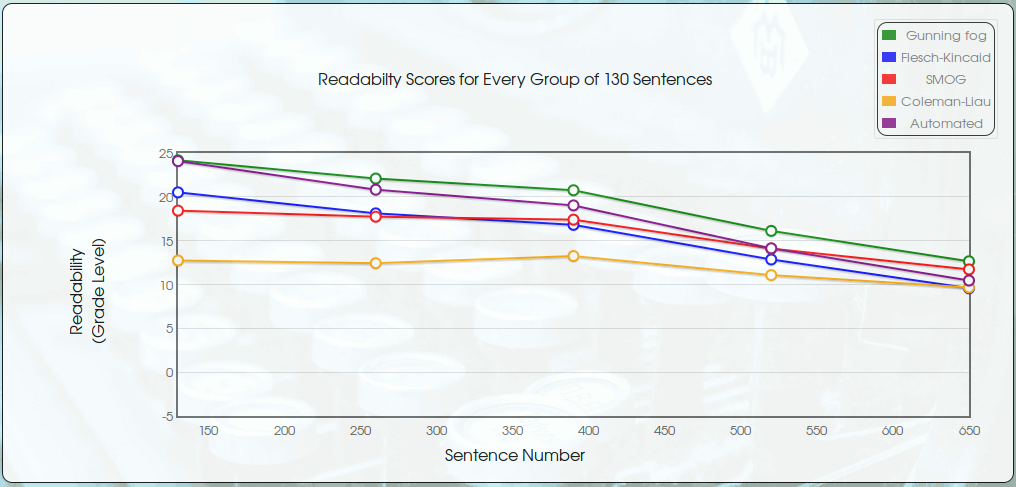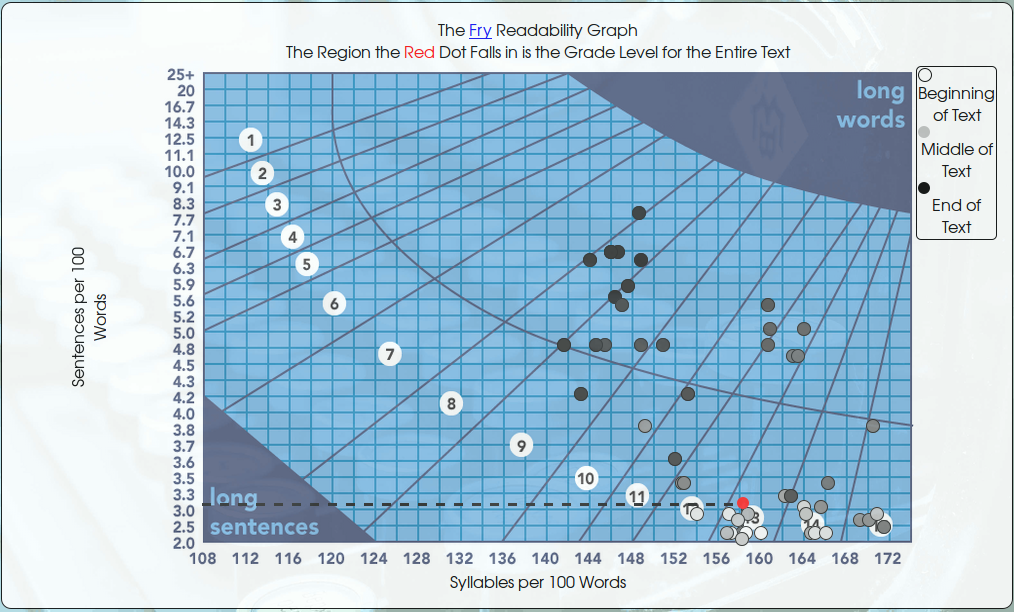We put every first paragraph of every U.S. Presidential State of the Union Address
from the very first in 1790 up to the most recent in 2015 consecutively into one
text file and ran a
readability analysis.
The graph below summarizes the readability level for every 130 sentences.
We also looked at the
The Fry Readability Formula
of random sample of fifty 500-word passages and the results are seen below.
Lighter dots indicate that a passage is closer to the beginning of the text.
The above graphs suggest that the State of the Union Address
has become simpler and simpler as we progress from the first to the most recent.
Does the above trend suggest, as
some
have, that "The State of the Union is... Dumber?"
Maybe yes. Maybe no. Before we rush to judgement, let us consider some facts about
the history of the U.S. and the history of State of the Union Address itself.
|
-The State of the Union Address was originally an address to Congress,
not the general population.
|
|
-From 1801 to 1912 the State of the Union (SOTU) was not a speech, but a written report delivered to Congress.
|
|
-Literacy rates were considerably lower in the past than the present.
|
|
-Liguistic differences between the past and present.
|
|
-Our analysis only included the first paragraph of each SOTU address.
|
As the SOTU Address in its earlier forms was an address made only to people who
were mostly skilled in the practice of law and accustomed to handling affairs of state,
it comes as no surprise that the language of the address was more more complex,
technical, and difficult.
Thus, as the SOTU address evolved from an address to Congress to an address
to the general population, it is also not surprising that the readability scores
(that is, measures of text complexity) have shown a steady decrease.
Another point to consider is that the language spoken in the early U.S.
(hath, shewn, whither, thither, and henceforth) is quite different from the language spoken today.
Could this have some influence upon the results? It is important to note that the readability
formulas were developed with 20th century English in mind.
What is more, since the address was for more than 100 years was delivered to Congress as a written report,
the reader must ask the question if this has any influence upon the language of the text.
We believe a solid argument could be made in support of this.
Finally, we should question the analysis as well.
We point out that to really do the above analysis justice,
every SOTU address should be analyzed in its entirety if one wants to make the
conclusion that the language of the SOTU has become simpler.
Due to browser constraints, we only looked at the first paragraph of each SOTU which, though suggestive,
is questionable when used to represent the entire text.
We offer no conclusions except that the analysis we presented above is suggestive and deserves
further investigation.
We encourage the reader to draw their own conclusions by doing their own
analysis and asking their own questions.
Try different texts from the past: novels, short stories,
newspaper and magazine articles, and educational textbooks.
How do these texts' complexity compare with early SOTU Addresses?
Is advertisement copy from the past more "sophisticated" than the present?
Do these analyses support the idea that language in the U.S. is simpler now than in the past?

